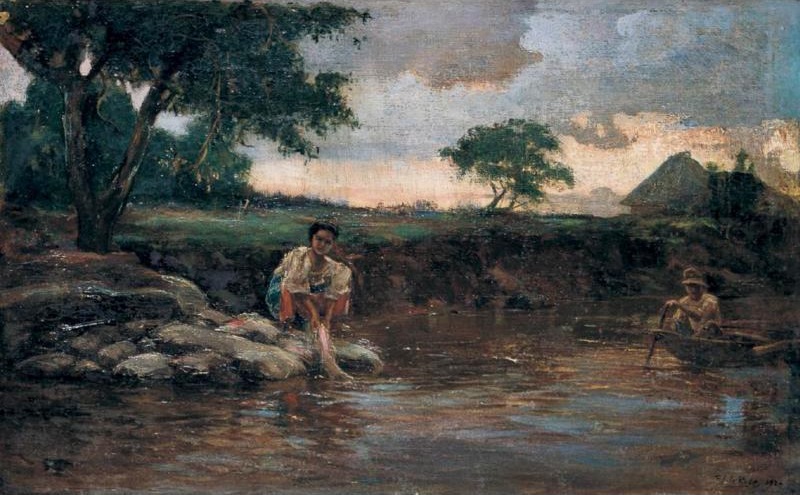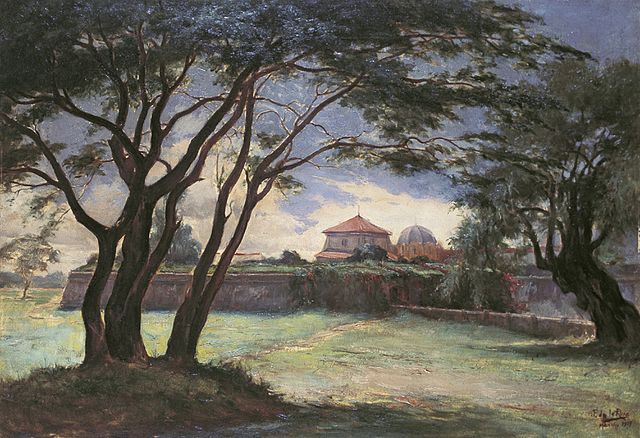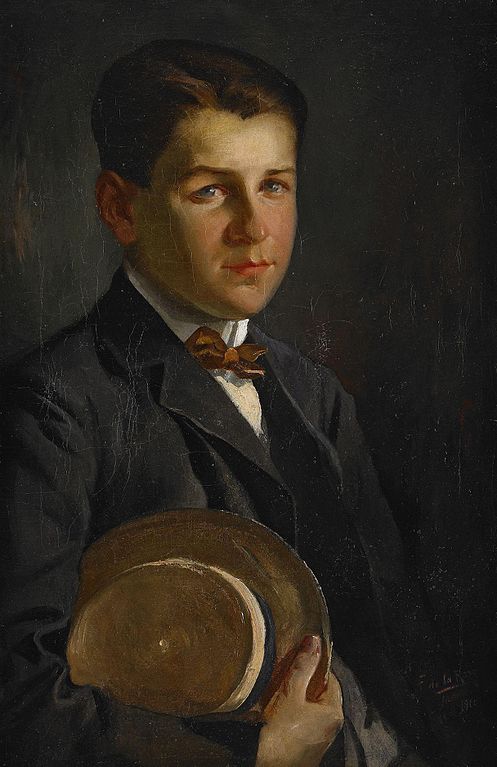
A book newly acquired by the Thammasat University Libraries demonstrates that it is possible for ASEAN community members to be inspired by the English language. At Home in Unhomeliness: An Anthology Of Philippine Postcolonial Poetry In English was donated to the TU Libraries through the generosity of Professor Benedict Anderson and Ajarn Charnvit Kasetsiri. As readers of Professor Anderson’s books know, he was a historian and political scientist whose thoughts were much inspired by language and literature. In 2014, Professor Anderson gave a lecture, The Age of Globalization: Anarchists and the Anticolonial Imagination, at the University of the Philippines-Diliman. An online report of his presentation on the UP Diliman website notes:
Anderson discussed his intellectual development, which involved reading philosophy and literature, among others. His was one of the last generations reared on classical (Greek and Latin) education. This exposure to the literary, in the broadest sense of the word, proved to be a huge influence on his political ideas. Indeed, when asked whether literature has been effectively used to create a sense of nation, he explained how his fascination with the subject, along with language, shaped his analysis of nationalism and nation-building… On nation-building, Anderson named two primary social elements that play into and influence the development of a sense of nationality: language and geography. Discussing the former, he compared the Philippines to Indonesia, both of which are composed of different ethnic groups with their own languages. The Philippine state, however, had inadequate power to “instill one unifying language,” which inadvertently led to preservation of various ethnic languages. In contrast, the Indonesian state intensely and successfully promoted a national lingua franca, a project that effectively marginalized many ethnic dialects. The concept of boundary, on the other hand, involves an imagined geography, which can expand or shrink through conquest or colonization.

At Home in Unhomeliness was edited by J. Neil C. Garcia, a professor of English, creative writing and comparative literature at the College of Arts and Letters, UP Diliman, where he also serves as an associate for poetry at the Likhaan: U.P. Institute of Creative Writing. The anthology is shelved in the Charnvit Kasetsiri Room of the Pridi Banomyong Library, Tha Prachan campus. It was inscribed to Professor Anderson by the editor:
=====================================
For Ben –
Because the poem begins to be written only when it begins to be read. Salud!
Neil
============================================
The TU Libraries also own several more books written, edited, or coedited by Professor Garcia. They include The Likhaan Book of Philippine Criticism, 1992-1997; Performing the Self: Occasional Prose; and Misterios and other Poems, all of which were donated by Professor Anderson and Ajarn Charnvit and are now shelved in the Charnvit Kasetsiri Room of the Pridi Banomyong Library. By gathering poems written directly in English by his fellow Filipino writers, Professor Garcia made a statement about creative potential even outside of one’s native language. Thai students and ajarns might note that in other Asian and ASEAN countries, this is not rare. Journals such as the Asia Literary Review, among others, print poems and other writings by non-native speaking English authors. The managing editor of Asia Literary Review is Phillip Kim, a Korean-American banker who lived and worked in Hong Kong for over twenty years before moving to the United Kingdom in early 2015. Another example of Asian writers expressing themselves directly in English is Cha: An Asian Literary Journal. Founded in 2007, Cha is the first Hong Kong-based English online literary journal, publishing poetry, fiction, creative non-fiction, reviews, photography and art. It focuses mainly on Asian-themed creativity. The Quarterly Literary Review Singapore is another, aiming to
promote the literary arts in Singapore, to stimulate the feedback mechanisms in the literary scene, and to develop Singaporean writers to international standards… We believe that good writing can and will emerge in Singapore, and we aim to aid that process by applying rigorous critical and editorial criteria.
As Professor Garcia points out in a preface to At Home in Unhomeliness, there are many paradoxes about authors in countries with colonial pasts finding freedom of expression through the language of the colonizer:
Colonized peoples who speak (and write) in the language of colonization necessarily confront the problem of consciousness, and therefore, of identity.
Yet as we know from India and other formerly colonized nations, writers can create new and original variations on standard British or American English. As long as emotions and ideas are expressed in a lively way, valid poetry can result. At Home in Unhomeliness contains a number of poems using English with confidence and personal emphasis. One of the most striking is by the poet, visual artist, and architect Sid (Isidro) Gomez Hildawa (1962-2008):

=========================
Poet Bites on a Poem
In a 1993 poetry reading recorded on video,
Denise Levertov, distinguished American poet,
with graying hair yet without reading glasses,
wearing a stylish blue dress and a long necklace,
had just finished reciting from one of her books
a lengthy poem in the middle of which she drank
twice from a glass of water, and was moving on
from that book to a set of loose pages –
unpublished writings – when, for a moment,
in gathering these pages and ordering the poems,
with both hands full and the podium cluttered,
she clamped on a sheet of paper using her mouth.
Or should I say, she held onto the page with her lips?
It sounds awkward but there seems to be no way
of putting it more elegantly, because it was indeed
an awkward three seconds there under the spotlight,
onstage, in full view of the audience and the camera.
Awkward still, years after the fact, to compose poetry
about it, as I’m doing now, juggling a heap of words
in the scattered pages of memory and imagination,
a journal of loose notes on one hand, a ballpoint pen
skipping on the other, a podium of a page to fit a poem,
now and then having to latch on to words with my mouth.
=============
This poem focuses on amusing details, and shows a strong visual imagination. Denise Levertov was a British-born poet who made an academic career in America. She was a vocal and energetic personality, and Sid Gomez Hildawa was clearly impressed by her reading, remembering it years after the event. The image of Ms. Levertov clamping down on her writings with her teeth is funny, but also suggests other meanings. For these reasons, the poem is a convincing and memorable statement of something seen by the writer. A small event, forgotten by others, was made permanently interesting by the writer. Sid Gomez Hildawa worked as manager for the Visual, Literary, and Media Arts Department of the Cultural Center of the Philippines. He obtained his B.S. Architecture degree from the University of the Philippines, and designed homes, stores, and offices. He was also a skilled painter. He earned an MFA in creative writing and a Ph.D. in literature from De la Salle University, Manila. He lectured part-time at the School of Design and Arts, De La Salle–College of Saint Benilde, Manila, as well as the B.A. Philippine Arts Program, University of the Philippines. For a time he also worked as artistic director of Kulay-Diwa Gallery of Philippine Contemporary Art. The goals of Kulay-Diwa, as stated on their website:
To discover and promote the works of talented, young and deserving Filipino artists;
To serve as a cultural outpost and make the arts more accessible to the fast-growing communities South of Manila; and
To foster cultural interaction and exchanges with the local regions, Southeast Asia and other countries.

(All images courtesy of Wikimedia Commons)
